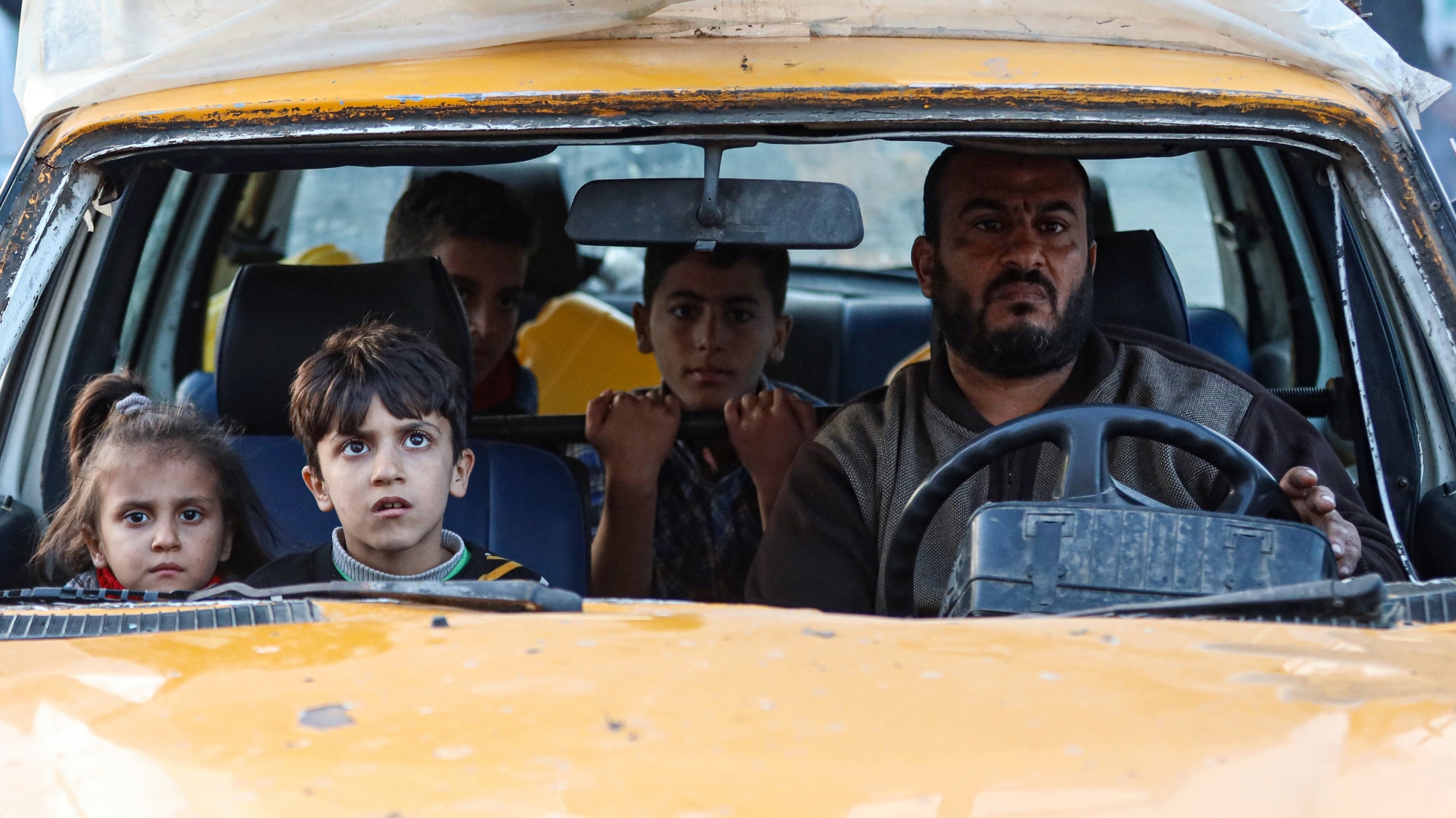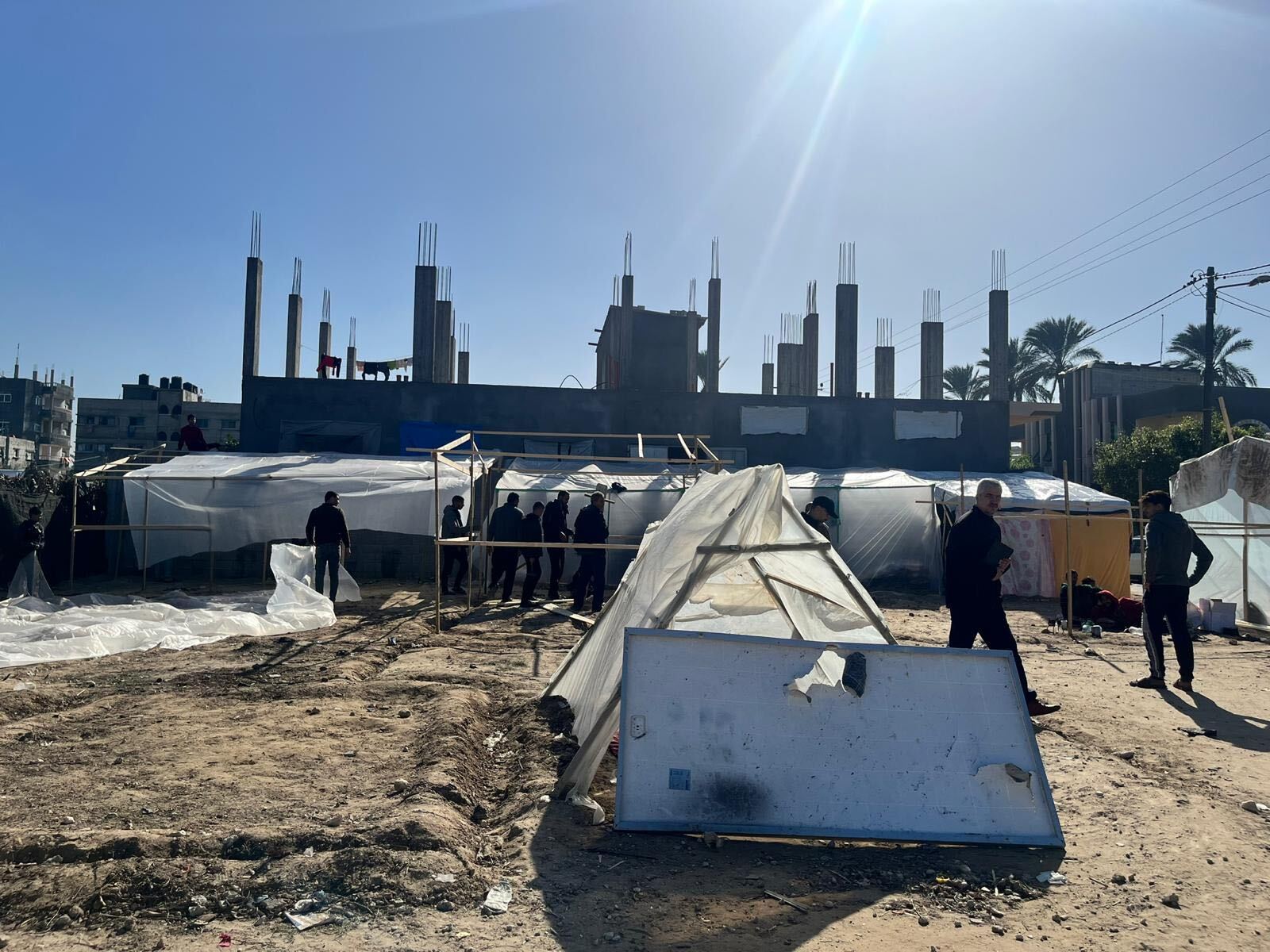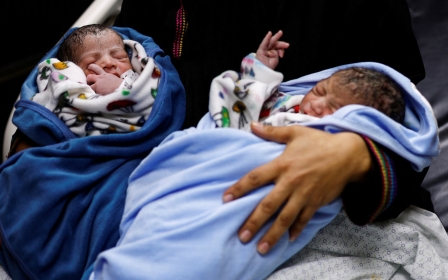War on Gaza: Israel forcibly displaces Palestinians to 'camps inside refugee camps'

In an empty stretch of land northwest of the Deir al-Balah refugee camp, tired and hungry Palestinian families are hard at work, setting up new tents and makeshift homes after being expelled yet again.
On the road, dozens more like them arrive in cars and animal-drawn carts, carrying their mattresses, blankets and luggage.
They come from the central Gaza Strip, areas previously deemed "safe" by Israel who fled Gaza City and other northern towns.
On Friday, the Israeli military labelled central areas as "fighting zones" and ordered displaced Palestinians to move again.
With many in those areas already displaced multiple times, the order came as a shock.
"When we saw the news, I started crying hysterically. Where would I go with these children?" Asmaa Sawalha, a mother of four, told Middle East Eye.
"We do not have any relatives in Deir al-Balah," she said as her husband set up tents in the refugee camp with other men.
Follow Middle East Eye's live coverage of the Israel-Palestine war
Earlier this month, the Israeli military released a map of the 365 sqkm Gaza Strip, delineating it into more than 2,000 numbered blocks.
The military said residents can access information on the map to see which blocks were safe. But instructions have been confusing, at times contradictory, and some areas marked as safe were later bombed.
The latest order told residents of 12 central areas - mainly in the Bureij and Nuseirat refugee camps - to move to the adjacent Deir al-Balah, a small city already overcrowded with hundreds of thousands displaced earlier from other areas.
'Camps inside refugee camps'
Sawalha told MEE the family had sought refuge in the Bureij refugee camp earlier in the war, staying in a small room built on agricultural land owned by relatives.
They have nowhere else to go now but were forced to leave the room after the orders on Friday, with no specific destination in mind.
'We took our bags, boarded an animal-drawn cart, and arrived here without knowing where to stay'
- Asmaa Sawalha, Palestinian mother
"We took our bags, boarded an animal-drawn cart, and arrived here without knowing where to stay," Sawalha, 38, said.
"We first went to a school [run by the UN], but they told us there was no room left for us. The place was already crowded, with people scattered in tents on the playground and even outside the school," she said.
The family were then told by some residents about empty land nearby, where some people were setting up new tents, and that is where they went.
"As you can see, we are building new displacement camps inside refugee camps."
The UN said on Friday that the scope of displacement resulting from the latest evacuation order was unclear.
Overall, the UN estimates 1.9m people have been displaced in Gaza since 7 October, equivalent to more than 80 percent of the population. Most are staying in central areas and the southernmost city of Rafah.
On Sunday night, Israeli fighter jets launched one of their deadliest air raids on the central Bureij, Maghazi and Nuseirat refugee camps.
More than 100 people were killed in the air strikes, which targeted crowded residential property. Dozens more were wounded.
No safety
Fear for her children's safety is what pushes Sawalha to follow Israel's displacement orders. But another concern weighs as heavily on her mind: the prospect of eventually finding herself displaced on the other side of the border with Egypt.
"I am afraid this is part of their plan, to forcibly displace us to Sinai, since they are gradually moving us towards the south and the Rafah border," she said.
"We do not know until when we will be able to stay here, or whether these temporary tents will become permanent refugee camps, like the one we are building these tents in," she added, referring to the Deir al-Balah refugee camp.
The camp was established in the aftermath of the 1948 Nakba, or catastrophe, to house Palestinian refugees forcibly expelled from their homes by Zionist militia.
There are more than 26,000 Palestine refugees registered in the camp, though the population could be higher, according to the UN.
Due to such fears of becoming permanent refugees, combined with a lack of safety and trust in Israeli orders, many are refusing to comply with the directives any more.
Ahmed al-Najdi, 23, was displaced from Gaza City with his family towards central areas earlier in the war.
'What would guarantee I won't be killed with my family if I went from this block to that block?'
- Ahmed al-Najdi, Gaza resident
Those areas are now considered "fighting zones" by the Israeli military, but Najdi says he is choosing to stay put.
"Even if we wanted to evacuate, there is nowhere to go," he told MEE.
"Even if we wanted to rent an apartment or a house in the other safe areas, we would not find any."
The young man, who is currently staying in the Bureij refugee camp, says three of his relatives were killed in an Israeli air strike on a home they were staying in at Deir al-Balah, where residents are currently asked to take refuge.
"What would guarantee I won't be killed with my family if I went from this block to that block?" Najdi said.
"This map was only created for the media so that Israel says 'we have warned residents'. But in reality, they are bombing them inside the blocks they say are safe."
Middle East Eye propose une couverture et une analyse indépendantes et incomparables du Moyen-Orient, de l’Afrique du Nord et d’autres régions du monde. Pour en savoir plus sur la reprise de ce contenu et les frais qui s’appliquent, veuillez remplir ce formulaire [en anglais]. Pour en savoir plus sur MEE, cliquez ici [en anglais].





